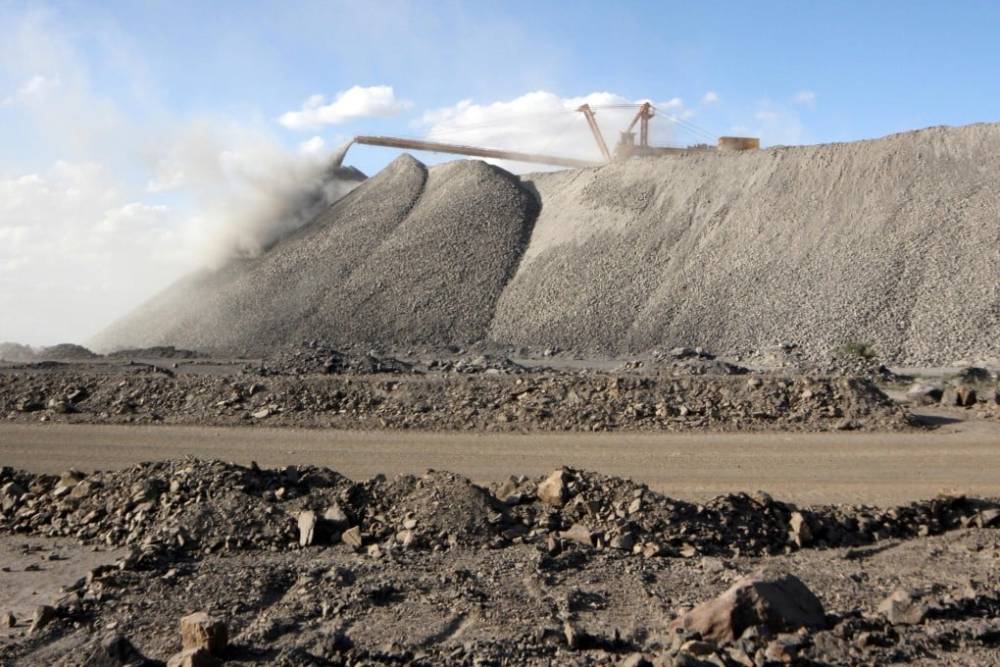
Mỹ chi mạnh tay thoát phụ thuộc đất hiếm Trung Quốc dù biết “trò chơi tốn kém và kéo dài”
-
Công ty REalloys của Mỹ nhận định việc Trung Quốc dừng xuất khẩu đất hiếm là động lực thúc đẩy xây dựng năng lực sản xuất thay thế ở nước ngoài, nhưng sẽ đối mặt với chi phí lớn và thời gian triển khai kéo dài.
-
Trung Quốc hiện sản xuất 69% quặng đất hiếm toàn cầu, nhưng kiểm soát tới 90% khâu tinh chế và 98-99% thị phần đất hiếm nặng dùng trong nam châm hiệu suất cao.
-
Nam châm này là thành phần thiết yếu trong xe điện, tua-bin gió và thiết bị quốc phòng. Lệnh hạn chế gần đây khiến một số nhà máy ô tô ở Mỹ và châu Âu phải tạm dừng hoạt động.
-
REalloys lên kế hoạch đầu tư hơn 50 triệu USD để xây dựng dây chuyền sản xuất 1.000 tấn vật liệu nam châm tại Mỹ vào năm 2027, hợp tác với Hội đồng Nghiên cứu Saskatchewan (Canada), sử dụng quặng từ Brazil và nguồn tái chế.
-
Công ty cũng xem xét phát triển mỏ đất hiếm tại tỉnh Saskatchewan, Canada.
-
Mỹ đã có các dự án xây dựng chuỗi cung ứng đất hiếm nội địa, trong đó có nhà máy chế biến tại California của MP Materials và tại Texas của Lynas Rare Earths (Úc).
-
Thomas Jones (Wood Mackenzie) cho rằng việc Mỹ độc lập khỏi Trung Quốc sẽ mất nhiều năm vì những rào cản về logistics, kỹ thuật, tài chính và môi trường.
-
Trung Quốc đã áp dụng hệ thống hạn ngạch sản xuất theo chỉ đạo nhà nước kể từ tháng 10/2024, củng cố thêm quyền kiểm soát thị trường.
-
Dù lệnh cấm được dỡ bỏ tạm thời vào tháng 6 theo thỏa thuận đình chiến thương mại, động thái của Trung Quốc được đánh giá là mạnh hơn các lần trước và có thể khiến các đối tác như EU, Ấn Độ, Hàn Quốc và Việt Nam tìm cách giảm phụ thuộc.
-
Đất hiếm gồm 17 nguyên tố kim loại, trong đó 10 nguyên tố đất hiếm nặng khó xử lý hơn và có chi phí môi trường cao do sử dụng axit mạnh và tạo ra chất thải phóng xạ.
-
Dự báo thị trường đất hiếm toàn cầu sẽ tăng trưởng 12,4%/năm, đạt 17 tỷ USD vào năm 2032 từ mức 6,69 tỷ USD năm 2024, nhưng triển vọng cung vẫn bấp bênh.
-
Rủi ro lớn là Trung Quốc có thể bất ngờ tung nguồn cung giá rẻ, buộc các quốc gia khác phải trợ giá hoặc áp thuế để duy trì tính cạnh tranh.
📌 Việc Trung Quốc ngừng xuất khẩu đất hiếm đẩy Mỹ và các nước vào thế buộc phải đầu tư chuỗi cung ứng thay thế. Dự án của REalloys trị giá 50 triệu USD dự kiến tạo ra 1.000 tấn vật liệu nam châm/năm vào 2027. Tuy nhiên, sự thống trị 98–99% của Trung Quốc ở mảng đất hiếm nặng và nguy cơ phá giá khiến các nước phải cân nhắc trợ cấp hoặc áp thuế để tự chủ nguồn cung.
https://www.scmp.com/business/article/3316153/chinas-rare-earth-curbs-spur-overseas-projects-reduce-reliance-says-us-developer
China’s rare earth curbs spur overseas projects to reduce reliance, says US developer
Thảo luận
Follow Us
Tin phổ biến



